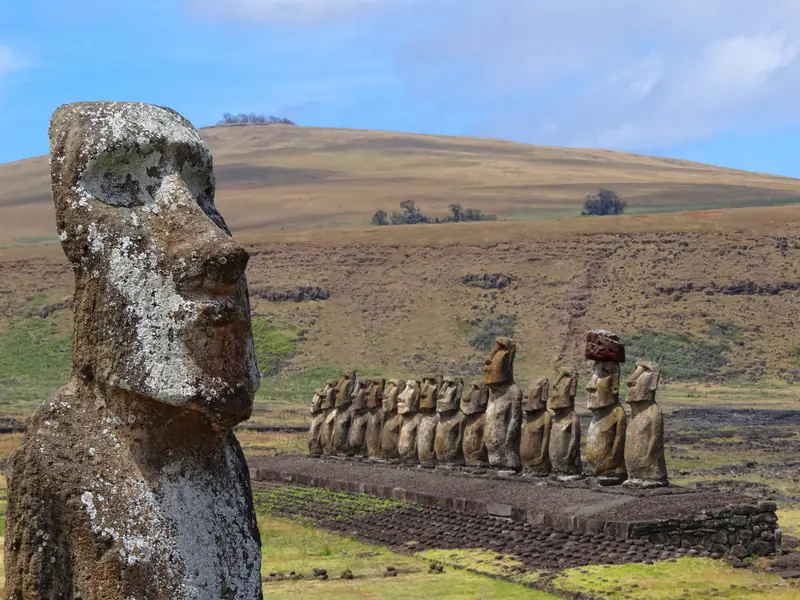UNESCO World Heritage Sites in Chile
Heritage Overview
Chile's UNESCO World Heritage sites reflect the extraordinary geographical extremes of one of the world's longest countries, encompassing mining heritage, indigenous cultures, and remote island ecosystems. The heritage spans from the driest desert on Earth to isolated Pacific islands, preserving industrial archaeology, pre-Columbian settlements, and distinctive architectural traditions adapted to seismic environments. Mining towns and industrial sites document the saltpetre and copper industries that shaped Chile's economic development and influenced global trade, featuring remarkable engineering solutions and company town planning. These sites preserve working-class culture and the social systems that developed around resource extraction in harsh desert environments. Wooden churches demonstrate exceptional earthquake-resistant architecture and cultural fusion between European building traditions and indigenous craftsmanship. Remote island sites preserve unique archaeological evidence of Polynesian settlement and cultural development in extreme isolation, featuring monumental stone sculptures and ceremonial platforms. Historic quarters showcase colonial urban planning and European architectural influences adapted to South American contexts. Together, Chile's heritage illustrates human adaptation to extreme climates and geographies, innovative architectural responses to natural hazards, and the cultural diversity spanning continental and oceanic territories.
Essential Information
Visa Requirements
Citizens of most Western countries including the United States, Canada, European Union, Australia, and Japan can enter Chile visa-free for tourism up to 90 days. Entry is granted through a Tourist Card (Tarjeta de Turismo) issued upon arrival at no cost, which must be retained and presented when departing. Some nationalities including India and China require visas from Chilean consulates before travel. Reciprocity fees were previously required but abolished for all nationalities. Passports must be valid for the duration of stay. Extensions beyond 90 days require immigration office applications. Overstaying carries fines calculated per day exceeded.
Currency
The official currency is the Chilean Peso (CLP). Credit and debit cards (Visa, Mastercard) are widely accepted in cities, hotels, restaurants, and larger establishments, with chip-and-PIN systems standard. ATMs (Redbanc network) are abundant in urban areas, dispensing pesos with typical limits around 200,000-400,000 pesos and charging fees for foreign cards. Cash remains important for markets, vendors, small businesses, and rural areas. US dollars can be exchanged at casas de cambio in cities, offering better rates than airports. Currency exchange is limited rurally. Payment apps like Mercado Pago are popular domestically. Bring sufficient pesos for remote sites.
Language
The official language is Spanish, spoken with a distinctive Chilean accent and rapid delivery that can challenge even fluent Spanish speakers. Chilean Spanish incorporates unique vocabulary and expressions not used elsewhere. English proficiency is moderate in Santiago and tourist areas but limited in rural regions and smaller cities. Tourism professionals in heritage sites typically speak some English. Younger generations have increasing English exposure through education. Signage in major tourist areas includes English. German is spoken in some southern regions by descendants of German immigrants. Learning basic Spanish phrases significantly enhances travel experiences and facilitates communication throughout Chile.
Climate
Chile's extreme length creates diverse climates across regions. The north features desert conditions with minimal rainfall and temperatures ranging 15-30°C year-round. Central Chile around Santiago experiences Mediterranean climate with hot, dry summers (December-February) reaching 30-35°C and mild, wet winters (June-August) averaging 8-15°C with occasional freezing. The south features temperate oceanic climate with year-round precipitation, cool temperatures, and strong winds. Easter Island enjoys subtropical climate with warm temperatures and higher humidity. Spring (September-November) and autumn (March-May) offer ideal conditions for most regions. Summer suits southern Patagonia, whilst northern desert sites are visitable year-round. Central summer can be hot.
